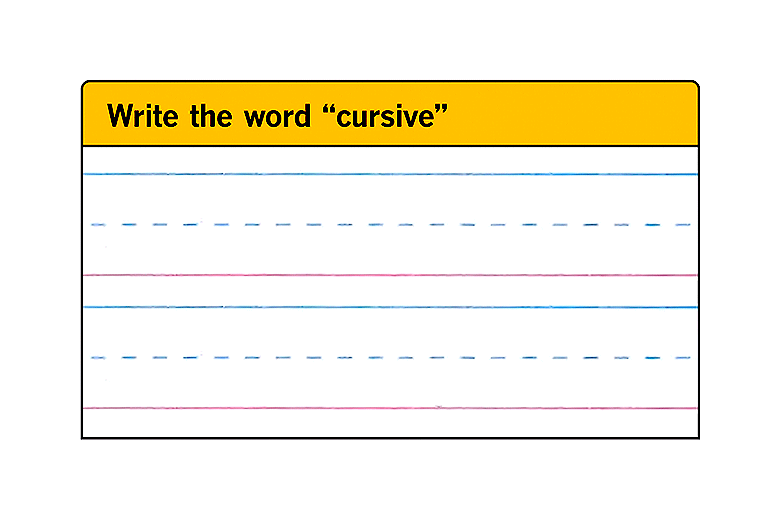Getting Artists On-Line : Tustin Firm’s ‘Learn to Draw’ Software Helps Kids Get the Picture
- Share via
TUSTIN — Follow the moving cursor.
That is a minimalist task in an age of multimedia computer software that boggles the imagination with movie-quality video games and digital sound that blasts the ears. But with that simple rule, an Orange County company has found a no-frills formula for teaching elementary and junior high school children how to draw by following instructions on a computer screen--without much visual fanfare.
The Dinosaur Edition of Draw to Learn was released this week. Produced by Draw to Learn Associates in Tustin, the $39.95 program teaches youngsters to draw three-dimensional-looking pictures with pencil and paper by watching instructions on a computer screen.
“It’s not whiz-bang, state-of-the-art animation,” said Tom Howell, a partner in the company. “Kids should not be distracted by that when they’re trying to learn. We wanted it to be a quiet-time program.”
Draw to Learn is the brainchild of Craig Chandler, 43, a software entrepreneur, and Howell, 72, a free-lance cartoonist. Its genesis was in July, when Howell thought aloud to Chandler: “Teaching kids to draw is so mechanical that a machine could do it.”
Chandler is president of Computer Information Enterprises in Tustin, which installs IBM computer systems and publishes business software such as programs that control conveyor belt systems in warehouses.
Chandler worked on the project for six months in his spare time.
“Initially it was a hobby,” he said. “Now it’s going interstellar.”
He worked with Howell in a partnership to develop a program that would mimic the teaching process. Howell drew the animated sequences, and Chandler scanned them into the computer and worked them into a program.
The drawing lessons are led by an animated character named Rembrandt Worm, who outlines each move so that children can pencil basic ovals and circles in what is called the construction-line technique.
With that method, children draw geometric figures to get the basic form of the three-dimensional object, then fill in the details and erase the construction lines.
The technique, Howell said, is the same one that cartoon animators use. When several animators work on a cartoon, they have to use a uniform style of drawing to make sure that a character such as Mickey Mouse always looks the same.
Children have a choice of nine different dinosaurs. Once they complete their drawings, they are rewarded with a colorful painting of dinosaur scenes. The program is organized into different steps; the child can press a button when ready to move on.
Art books offer instructions, but they don’t show the motions needed to create drawings. With the computer as instructor, children can learn at their own pace without the pressure of keeping up with a classroom of other students.
“It gave them an opportunity to experience drawing from a different point of view,” said Kerry Rubel, a fifth-grade teacher at Los Naranjos Elementary School in Irvine. “It gave them a chance to move from geometric figures to a finished product.”
The fifth-graders in Rubel’s class were no experts in drawing. Yet by using the program, they produced three-dimensional-looking sketches of dinosaurs, rather than the typical stick-figure outlines that non-Rembrandts draw. Recommended ages for the program are 7 to 14.
Howell learned cartooning the old-fashioned way. In the 1930s, while he was in high school, he began working for “Ripley’s Believe It or Not!” ghost stories. He also did pencil work on “Flash Gordon” comics and helped with the conception of “Captain Kangaroo.” Now he is a syndicated artist who produces cartoons on tennis lessons.
“I’ve been around kids all my life,” Howell said.
Chandler worked for IBM for five years, leaving in 1982 to form CIE. The company has 40 employees and generates about $4 million in revenue.
“I see this Draw to Learn business as another division,” he said.
Other programs planned in the series are Down on the Farm, Under the Sea, Outer Space, At the Circus and A Trip to the Zoo. The programs run on MS-DOS compatible computers, and can be used with speech software that allows the computer to read the script aloud to the child.
The series was simple to produce because Chandler designed the program in modules with a script, the program software and the visual elements organized into interchangeable lines of code. Thus, the script can be rewritten in another language without the need to remake the visual part of the program.
Chandler thinks that the children’s education market is the segment of the computer industry with the greatest potential for growth. It has attracted a crowd of developers, including Davidson & Associates, an education software company based in Torrance that went public in March.
“Educational software is one of the fastest-growing markets,” said Kathy Smith, analyst at the research firm Renaissance Capital Partners in Greenwich, Conn. “The early children’s software was clunky. But the computers (now) are a lot more powerful and able to handle sophisticated programs that can capture children’s attention.”
Analyst Bruce Ryon at Dataquest Inc., a market research firm in San Jose, said computers have proved successful as learning tools because they can be programmed to be interactive, involving the child in the learning process.
Some competitors, such as Broderbund Software, have expressed interest in distributing Draw to Learn, Chandler said. Meanwhile, the company is working on versions for the Macintosh line of computers and Microsoft Windows as well.
Other “paintbrush” programs teach children how to draw with a computer mouse by manipulating computer-rendered objects on a palette.
Industry followers thinks it is only a matter of time before pen-based computers--those that use a stylus as an input device--are used to produce art. But Draw to Learn Associates is betting that kids will stick to the basics.
“I still believe there is room in this world for people who use pencils,” Howell said.
More to Read
The biggest entertainment stories
Get our big stories about Hollywood, film, television, music, arts, culture and more right in your inbox as soon as they publish.
You may occasionally receive promotional content from the Los Angeles Times.










